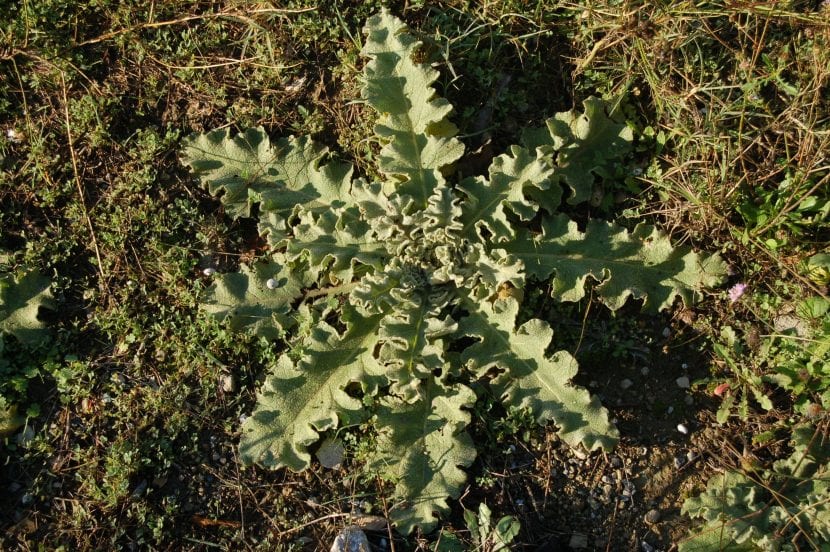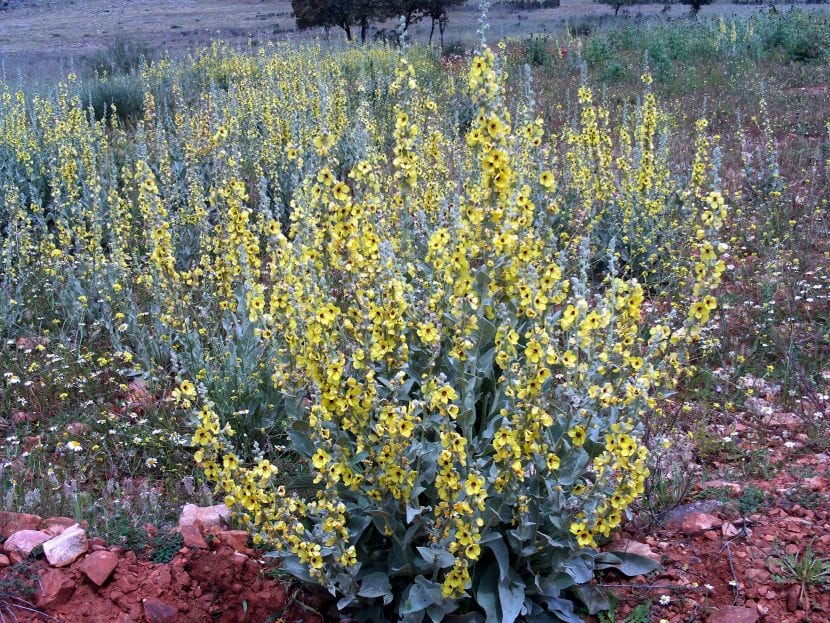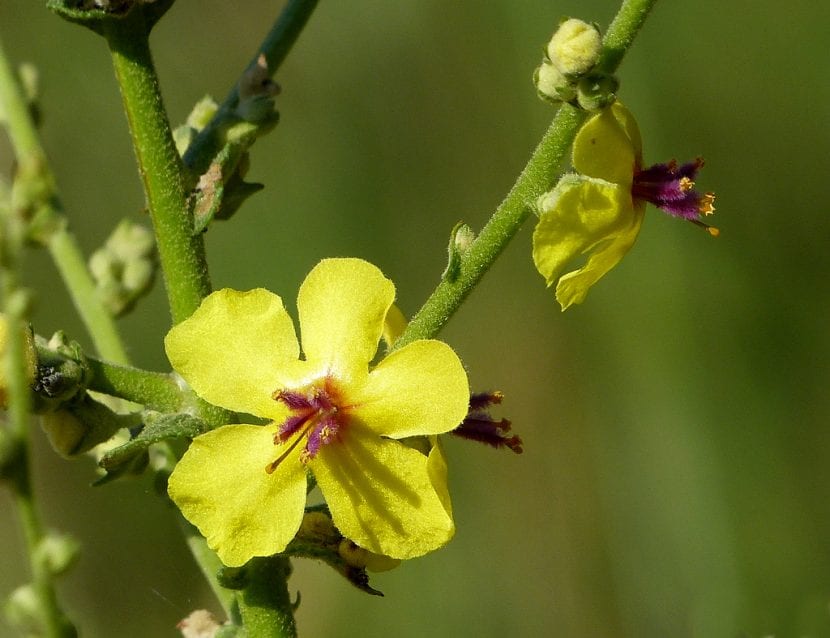
Image - Wikimedia / Michel Chauvet
There are many herbs that, growing in the garden, are uprooted. And it is logical: they grow very fast, so much so that they invade the land that we want ornamental and / or garden plants to occupy. But there are some species that are interesting to conserve, such as the Verbascum sinuatum.
It is a very beautiful, velvety plant that produces flowers of up to 3cm in diameter and that, in addition, has medicinal properties.
Origin and characteristics

It is an herb native to southern Europe (including the Canary Islands) and Iran, known as acigustre, bordolobo, candelera, ashtray, mullein, flower of shame, torcías, verbasco, waved verbasco, or romanza. Has a life cycle of two years; that is, it germinates, grows, blooms, fructifies and dies in two seasons, and reaches a total height -with the floral stem- of around 1 meter (if we talk only about the leaves, they do not exceed 40-50cm).
The leaves form large rosettes, and are lobed and wavy, greenish in color. The flowers, which sprout in the spring of the second year, are yellow, measure about 3cm in diameter and have five stamens with purplish or purple hairs.
Medical uses
The root of Verbascum sinuatum it is used as healing and also to treat the symptoms of respiratory system diseases, such as coughing, sneezing, or nasal secretions.
What are their cares?

Image - Flickr / Salomé Bielsa
If you want to have a copy, we recommend you take care of it in the following way:
- Location: outside, in full sun.
- Earth:
- Pot: fill with universal growing substrate.
- Garden: grows on all types of soils, preferring clay ones.
- Irrigation: 4-5 times a week in summer, and every 2 or 3 days the rest of the year.
- Subscriber: from the beginning of spring to the end of summer it is advisable to fertilize it with organic fertilizers, such as guano, compost o manure, once every 15 or 20 days.
- Multiplication: by seeds in spring.
- Rusticity: it resists frosts down to -12ºC, but remember that it is biennial: the second year it will flower and dry out.
What did you think of this herb? Did you know her?